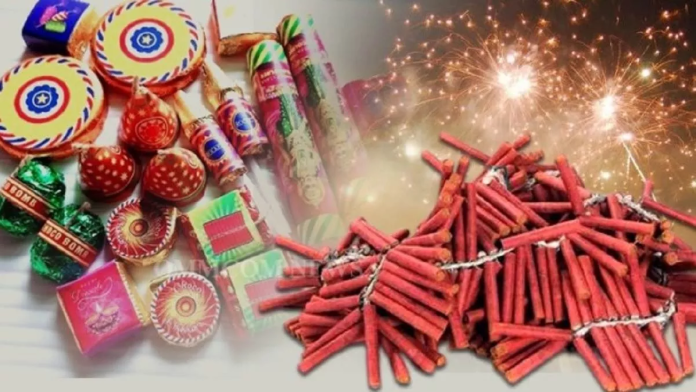The Supreme Court has made it clear that the guidelines it has issued so far regarding firecrackers are not only for Delhi-NCR but for the entire country. In such a situation, let us know what guidelines have been issued by the Supreme Court regarding firecrackers.
Will we be able to burst crackers this time or not? This question arises as soon as Diwali approaches. Bombay High Court has refused to impose a complete ban on firecrackers. Now the Supreme Court has also made it clear that the instructions issued earlier regarding firecrackers were not only for Delhi-NCR but for the entire country.
The Supreme Court made it clear on Tuesday that the first guidelines issued by it regarding firecrackers are for the entire country and there is no need to issue any separate instructions for any state.
The case in which the Supreme Court said this while hearing is pending since 2015. This petition was filed at that time on behalf of Arjun Gopal, Aarav Bhandari and Zoya Rao Bhasin. At that time she was between 6 to 14 months old. This petition was filed on behalf of the Legal Guardian.
In this petition, there was a demand for a complete ban on firecrackers. This petition has not been settled yet, but during the hearing on it, the court had issued guidelines twice.
The bench of Justice AS Bopanna and Justice MM Sundaresh is hearing this. Justice Bopanna said that nowadays it is not children but adults who burn firecrackers. At the same time, Justice Sundaresh said that when it comes to environmental protection, a wrong impression is made that it is the work of the court only.
What are the guidelines on firecrackers?
The Supreme Court has issued guidelines twice regarding firecrackers. First time on 23 October 2018 and second time on 29 October 2018.
During this time, the Supreme Court had made it clear that there is no complete ban on firecrackers and only those firecrackers which contain barium salt are banned.
In October 2018, the Supreme Court had banned the sale and burning of all firecrackers except green firecrackers. Online sale of these firecrackers was also banned.
Along with this, the Supreme Court had also fixed the time for bursting firecrackers. According to the guidelines, firecrackers can be burst from 8 to 10 pm on Diwali. At the same time, crackers can be burst from 11:55 to 12:30 on the night of Christmas and New Year.
What instructions did SC give on pollution?
– In October 2018, the Supreme Court banned the sale of BS-IV engine vehicles after April 1, 2020.
– In October 2018 itself, the Supreme Court fixed the time for bursting firecrackers on Diwali and other festivals from 8 to 10 pm. Also ordered to sell only green firecrackers.
– In 2018, the Supreme Court banned 15 year old petrol and 10 year old diesel vehicles from running on the roads of NCR.
– 2019 The court said that people in Delhi-NCR are losing ‘precious years of life’ due to pollution and they cannot be left to die like this. The Supreme Court had ordered Punjab, Haryana and Western UP not to burn stubble.
How responsible are Diwali firecrackers for pollution?
For some years, the sale and use of firecrackers is banned as soon as Diwali approaches. Especially in Delhi-NCR and surrounding areas. This is done so that the deteriorating air can be saved from getting worse.
In February 2018, the University of Minnesota and the National Institute of Finance and Policy conducted a study on the impact of firecrackers on Delhi’s bad air. For this, data was taken from 2013 to 2016. Based on the data, it was claimed that the amount of PM2.5 in Delhi had increased by 40% every year on the next day of Diwali. At the same time, there was a 100% increase in PM2.5 between 6 pm and 11 pm on Diwali.
Similarly, the report of Central Pollution Control Board (CPCB) came in May 2021. In this report, information about air pollution and noise pollution before and after Diwali 2020 was given. This report contained data of 8 cities including Delhi, Bhopal, Agra, Bengaluru.
It was told in this report that after Diwali, the amount of PM10 had increased by 22% to 114% in 8 cities the next day. According to this, after Diwali the amount of PM10 in Delhi had increased by 67.1%. Whereas, in Lucknow it had increased by 114%. At the same time, the amount of PM2.5 had increased by 82.9% in Delhi and 67.6% in Lucknow.













